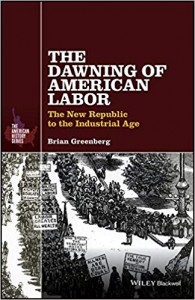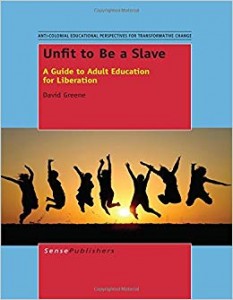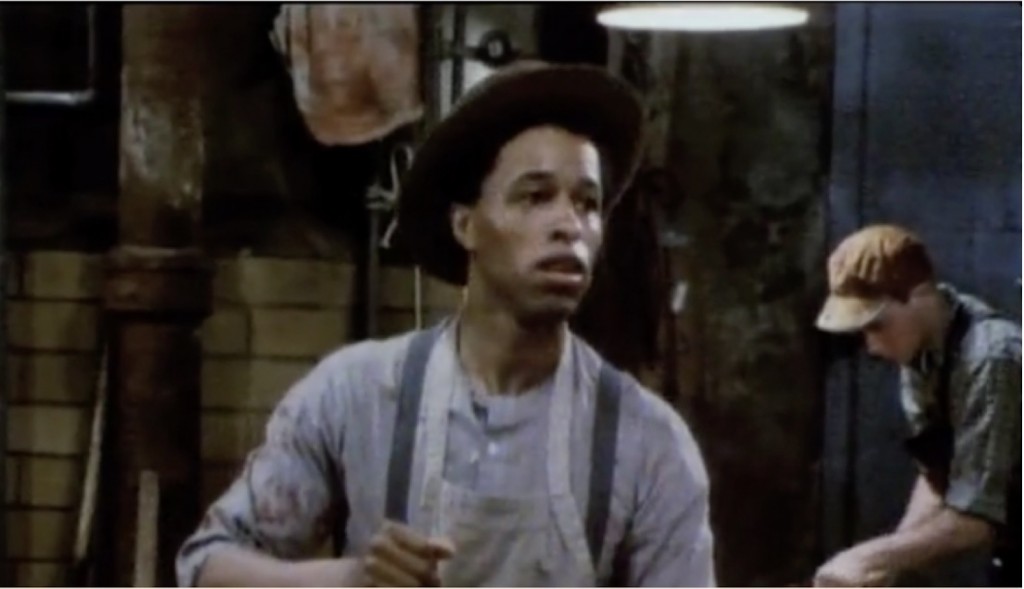Book Nook for Autumn 2018
From Jane Latour, N.Y. Labor History Association:
Inspired by our Nov. 12th program on the massive 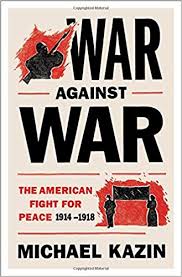 resistance to our entry into World War I, I just read Michael Kazin’s brilliant War Against War: The American Fight for Peace 1914-1918, followed by Ernest Hemingway’s great WWI novel, A Farewell to Arms. Emily Dickinson captured the way a book gives wings to the spirit…
resistance to our entry into World War I, I just read Michael Kazin’s brilliant War Against War: The American Fight for Peace 1914-1918, followed by Ernest Hemingway’s great WWI novel, A Farewell to Arms. Emily Dickinson captured the way a book gives wings to the spirit…
He ate and drank the precious words,
His spirit grew robust;
He knew no more that he was poor,
Nor that his frame was dust.
He danced along the dingy days,
And this bequest of wings
Was but a book. What liberty
A loosened spirit brings!
Even when reading about war and the failure of a movement against war, books lift the spirit in these troubled times.
Several readers contributed to this seasonal offering for our Book Nook. Here, in alphabetical order by reader, are the books that gave them wings…
***
Pam Elam
President, #Monumental Women
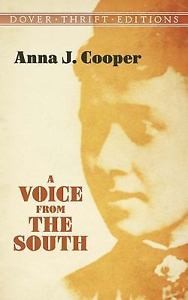 My favorite books are autobiographies by women. I like the fact that you read/hear the woman’s story directly from her – no filter, no analysis, no intermediaries. She presents herself as she wishes to be seen. Three of the most interesting books I’ve read lately are A Voice From The South by Anna Julia Cooper (1892); A Colored Woman In A White World by Mary Church Terrell (1940); and Crusade For Justice by Ida B. Wells (written from 1928-1931 but not published until 1970).
My favorite books are autobiographies by women. I like the fact that you read/hear the woman’s story directly from her – no filter, no analysis, no intermediaries. She presents herself as she wishes to be seen. Three of the most interesting books I’ve read lately are A Voice From The South by Anna Julia Cooper (1892); A Colored Woman In A White World by Mary Church Terrell (1940); and Crusade For Justice by Ida B. Wells (written from 1928-1931 but not published until 1970).
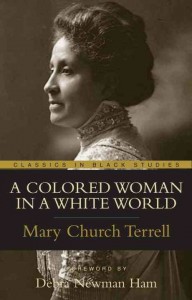 Each book provides a clear picture of the woman writing it. In her autobiography, Ida B. Wells provides chapter and verse of battles fought, confronting both adversaries and “allies” alike. Sadly, the book ends in mid-sentence because Wells did not live to finish it. But most interesting to me, were her honest descriptions of differences with other leaders of the time. One of those leaders with whom Wells sometimes disagreed was Mary Church Terrell. Terrell’s autobiography focuses less on confrontation and more on a step by step story of obstacles overcome and challenges yet to face. Terrell’s approach to challenges may have differed
Each book provides a clear picture of the woman writing it. In her autobiography, Ida B. Wells provides chapter and verse of battles fought, confronting both adversaries and “allies” alike. Sadly, the book ends in mid-sentence because Wells did not live to finish it. But most interesting to me, were her honest descriptions of differences with other leaders of the time. One of those leaders with whom Wells sometimes disagreed was Mary Church Terrell. Terrell’s autobiography focuses less on confrontation and more on a step by step story of obstacles overcome and challenges yet to face. Terrell’s approach to challenges may have differed
 dramatically from that of Wells, but no one can doubt the courage and integrity with which each woman fought for justice. The same can certainly be said of Anna Julia Cooper who framed autobiographical accounts into essays that created a political theory for women of color long before the books of feminism’s second wave appeared. These three women have much to teach us all in terms of fighting against the odds and never backing down. The life stories they provide and the varied ways they fought against racism and sexism offer inspiration and energy to anyone working for social change.
dramatically from that of Wells, but no one can doubt the courage and integrity with which each woman fought for justice. The same can certainly be said of Anna Julia Cooper who framed autobiographical accounts into essays that created a political theory for women of color long before the books of feminism’s second wave appeared. These three women have much to teach us all in terms of fighting against the odds and never backing down. The life stories they provide and the varied ways they fought against racism and sexism offer inspiration and energy to anyone working for social change.
***
Kyle Friend
Communication Strategist, OPEIU
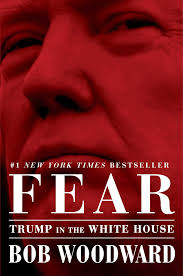 I have been reading, albeit mostly on the subway. I am reading Fear by Bob Woodward right now and loving it. Amid the utter disarray that characterizes our political system, the legendary Woodward, through hundreds of interviews and a fly-on-the-wall writing style, paints a clear portrait of the dysfunction within the West Wing of the White House, allowing readers to understand more fully the internal politics that shape the executive branch. A must-read for anyone who wants to make sense of a nonsensical political moment.
I have been reading, albeit mostly on the subway. I am reading Fear by Bob Woodward right now and loving it. Amid the utter disarray that characterizes our political system, the legendary Woodward, through hundreds of interviews and a fly-on-the-wall writing style, paints a clear portrait of the dysfunction within the West Wing of the White House, allowing readers to understand more fully the internal politics that shape the executive branch. A must-read for anyone who wants to make sense of a nonsensical political moment.
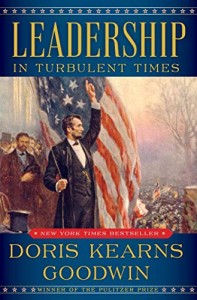 Next, I’m planning to pick up Leadership In Turbulent Times by the renowned historian Doris Kearns Goodwin. This book takes on the challenge of framing the turbulence experienced by four presidents—Lincoln, T. Roosevelt, FDR and LBJ—by contextualizing four distinct crises with each leader’s respective responses to those crises. Even though she does not touch upon the turbulence that dominates contemporary political life, Goodwin doesn’t need to do so. Her elegant writing and meticulous research provide an excellent overview of four men who came to dominate their respective political moments through grit, ingenuity, and relentlessness. These snapshots are enough for readers to make their own conclusions by comparing and contrasting historical challenges with those we face today.
Next, I’m planning to pick up Leadership In Turbulent Times by the renowned historian Doris Kearns Goodwin. This book takes on the challenge of framing the turbulence experienced by four presidents—Lincoln, T. Roosevelt, FDR and LBJ—by contextualizing four distinct crises with each leader’s respective responses to those crises. Even though she does not touch upon the turbulence that dominates contemporary political life, Goodwin doesn’t need to do so. Her elegant writing and meticulous research provide an excellent overview of four men who came to dominate their respective political moments through grit, ingenuity, and relentlessness. These snapshots are enough for readers to make their own conclusions by comparing and contrasting historical challenges with those we face today.
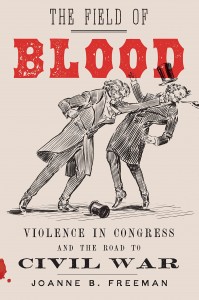 Then, The Field of Blood: Violence in Congress and the Road to Civil War, by Joanne B. Freeman, which seems like a great and quirky piece of history. I haven’t yet read any snippets of this book, but based on the reviews I’ve read, it has some relevance to today’s context.
Then, The Field of Blood: Violence in Congress and the Road to Civil War, by Joanne B. Freeman, which seems like a great and quirky piece of history. I haven’t yet read any snippets of this book, but based on the reviews I’ve read, it has some relevance to today’s context.
***
Steve Lawton & Madelaine Sommers
President, CWA Local 1102 / Intern at CWA Local 1102
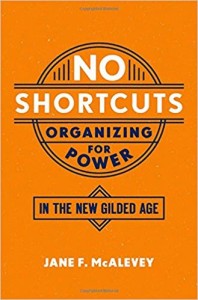 Jane McAlevey’s No Shortcuts: Organizing for Power in the New Gilded Age is a call to full-participation labor organizing, principled union democracy, and labor as a base-builder. It’s an inspiration for young organizers out there!
Jane McAlevey’s No Shortcuts: Organizing for Power in the New Gilded Age is a call to full-participation labor organizing, principled union democracy, and labor as a base-builder. It’s an inspiration for young organizers out there!
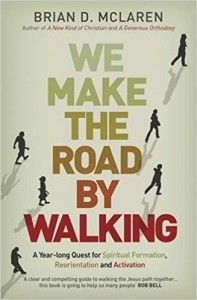 Brian D. McLaren’s We Make the Road by Walking, helps the reader to understand the disconnect between education and organizing that currently plagues the working class. We’re trying to organize and mobilize before we educate. This book gives us a good starting point to do better.
Brian D. McLaren’s We Make the Road by Walking, helps the reader to understand the disconnect between education and organizing that currently plagues the working class. We’re trying to organize and mobilize before we educate. This book gives us a good starting point to do better.
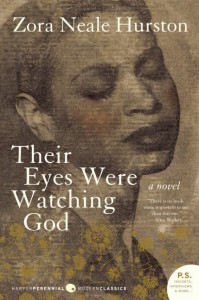 Zora Neale Hurston’s novel, Their Eyes Were Watching God, gives the reader a sense of the depth of both the African American and female struggle that is still prevalent in our society today.
Zora Neale Hurston’s novel, Their Eyes Were Watching God, gives the reader a sense of the depth of both the African American and female struggle that is still prevalent in our society today.
***
Angela Olszewski
Backyard Birder, Aspiring Tree Whisperer living in the Hudson Valley,
Former member of IUBAC Local No. 7 Tile Marble & Terrazzo
(Read about her life as a union member in Sisters in the Brotherhoods, Chapter 13).
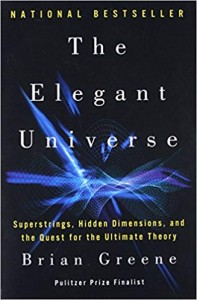 The Elegant Universe (2003 ed.) by physicist Brain Greene unpacks a lot of physics concepts in a way the lay person can understand. The Holy Grail here is a “unified field theory” – “a theory capable of describing nature’s forces within a single, all encompassing, coherent framework.” Like the rabbit in Alice, “I’m late, I’m late” I’m late to this revolution in describing reality, but this book explains theories that are the basis for so much of our technology, but so too will these concepts help us make the leap in thinking about everything (personal, emotional, spiritual, etc.). Grasping these concepts is for me a journey into a future where so much is possible.
The Elegant Universe (2003 ed.) by physicist Brain Greene unpacks a lot of physics concepts in a way the lay person can understand. The Holy Grail here is a “unified field theory” – “a theory capable of describing nature’s forces within a single, all encompassing, coherent framework.” Like the rabbit in Alice, “I’m late, I’m late” I’m late to this revolution in describing reality, but this book explains theories that are the basis for so much of our technology, but so too will these concepts help us make the leap in thinking about everything (personal, emotional, spiritual, etc.). Grasping these concepts is for me a journey into a future where so much is possible.
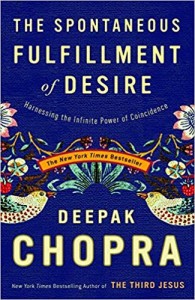 Deepak Chopra captured some of my enthusiasm for this in his book, The Spontaneous Fulfillment of Desire. ‘From this realm of pure potential, we are connected to everything that exists and everything that is yet to come. ‘Coincidences’ can then be recognized as containing precious clues about particular facets of our lives that require our attention. As you become more aware of coincidences and their meanings, you begin to connect more and more with the underlying field of infinite possibilities. This is when the magic begins. This is when you achieve the spontaneous fulfillment of desire.”
Deepak Chopra captured some of my enthusiasm for this in his book, The Spontaneous Fulfillment of Desire. ‘From this realm of pure potential, we are connected to everything that exists and everything that is yet to come. ‘Coincidences’ can then be recognized as containing precious clues about particular facets of our lives that require our attention. As you become more aware of coincidences and their meanings, you begin to connect more and more with the underlying field of infinite possibilities. This is when the magic begins. This is when you achieve the spontaneous fulfillment of desire.”
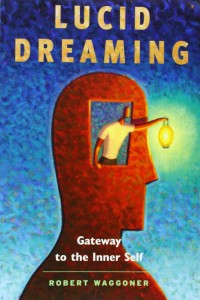 Lucid Dreaming, by Robert Waggoner (2009) – defined as “the ability to become consciously aware of dreaming while in the dream state.” This is the Rx for our times. As we scroll our phones, computers, and navigate the tsunami of digital information onslaught, we need to be aware of being aware. We can actually shape the world with conscious awareness. That is why we want people to be “woke.” I find the concepts in this book intersect with the concepts in The Elegant Universe. “We are stardust, we are golden, we are billion-year-old carbon / and we got to get ourselves back to the garden.” (Joni Mitchell Lyrics)
Lucid Dreaming, by Robert Waggoner (2009) – defined as “the ability to become consciously aware of dreaming while in the dream state.” This is the Rx for our times. As we scroll our phones, computers, and navigate the tsunami of digital information onslaught, we need to be aware of being aware. We can actually shape the world with conscious awareness. That is why we want people to be “woke.” I find the concepts in this book intersect with the concepts in The Elegant Universe. “We are stardust, we are golden, we are billion-year-old carbon / and we got to get ourselves back to the garden.” (Joni Mitchell Lyrics)
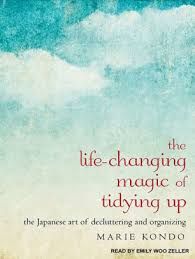 The Life Changing Magic of Tidying Up by Marie Kondo …why relevant? Think global / act local…Americans have lots of stuff (and lots of obesity). The author helps us take a look at why and how we keep things and how to free up our (living) space and our lives for deeper meaning, presence, and emotions.
The Life Changing Magic of Tidying Up by Marie Kondo …why relevant? Think global / act local…Americans have lots of stuff (and lots of obesity). The author helps us take a look at why and how we keep things and how to free up our (living) space and our lives for deeper meaning, presence, and emotions.
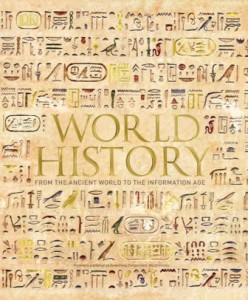 World History from the Ancient World to the Information Age, published by DK Penguin Random House. Provides broad and illustrated summaries of periods of human history. For example: The timeline for humans evolving from merely picking up a stick or a stone and using it as a tool/weapon to deliberately shaping and making a tool from a stick or a stone (approximately 3 million years ago).
World History from the Ancient World to the Information Age, published by DK Penguin Random House. Provides broad and illustrated summaries of periods of human history. For example: The timeline for humans evolving from merely picking up a stick or a stone and using it as a tool/weapon to deliberately shaping and making a tool from a stick or a stone (approximately 3 million years ago).
***
Jerald Podair
Professor of History and Robert S. French Professor of American Studies,
Lawrence University, Appleton, Wisconsin
Co-Editor, The Routledge History of the 20th Century United States
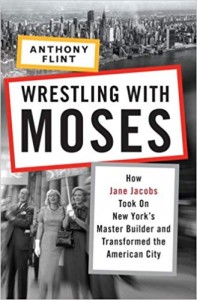 I am reading two books on related themes concurrently. Wrestling With Moses, by Anthony Flint, is the story of Jane Jacobs’ fight to preserve New York as a “neighborhood” city, one in which “locals” have a say in the decisions that affect their homes, families, and schools. Little Pink House, by Jeff Benedict, shows what happens when “outsiders” – in this case the corporate redevelopers of New London, Connecticut – misuse the power of eminent domain to make those decisions and employ the courts to override property rights and popular will. Both of these books show that absolute power, whether it be Robert Moses or the “redevelopment agency” people who “know better” than average citizens, tends to corrupt absolutely.
I am reading two books on related themes concurrently. Wrestling With Moses, by Anthony Flint, is the story of Jane Jacobs’ fight to preserve New York as a “neighborhood” city, one in which “locals” have a say in the decisions that affect their homes, families, and schools. Little Pink House, by Jeff Benedict, shows what happens when “outsiders” – in this case the corporate redevelopers of New London, Connecticut – misuse the power of eminent domain to make those decisions and employ the courts to override property rights and popular will. Both of these books show that absolute power, whether it be Robert Moses or the “redevelopment agency” people who “know better” than average citizens, tends to corrupt absolutely.
***
Denise Shavers
Graphic Artist
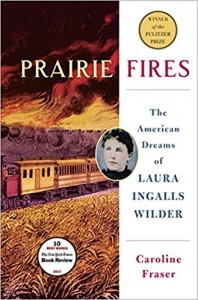 Prairie Fires: The American Dreams of Laura Ingalls Wilder, by Caroline Fraser, is wonderful and beautifully written. What is so striking to me is that we continue to make the same mistakes. Nothing is new. Reading Prairie Fires really has me seeing the parallels in what has happened in this country and what continues to happen. Unfortunately, we are our own worst enemy. So much of the rhetoric used around the time of the New Deal is happening right now. And Laura Ingalls Wilder’s daughter, Rose, seems to be so unstable but has a big voice that it makes one think about how people believe our current president, no matter how stupid he sounds. The book is about America’s painful history—and it continues. This is the way the country has always been. That’s what the book is saying so often. The poor have always been poor and the government has not always been helpful. And then, when the government does help people, some of them are left out. We will continue to make the same mistakes.
Prairie Fires: The American Dreams of Laura Ingalls Wilder, by Caroline Fraser, is wonderful and beautifully written. What is so striking to me is that we continue to make the same mistakes. Nothing is new. Reading Prairie Fires really has me seeing the parallels in what has happened in this country and what continues to happen. Unfortunately, we are our own worst enemy. So much of the rhetoric used around the time of the New Deal is happening right now. And Laura Ingalls Wilder’s daughter, Rose, seems to be so unstable but has a big voice that it makes one think about how people believe our current president, no matter how stupid he sounds. The book is about America’s painful history—and it continues. This is the way the country has always been. That’s what the book is saying so often. The poor have always been poor and the government has not always been helpful. And then, when the government does help people, some of them are left out. We will continue to make the same mistakes.

